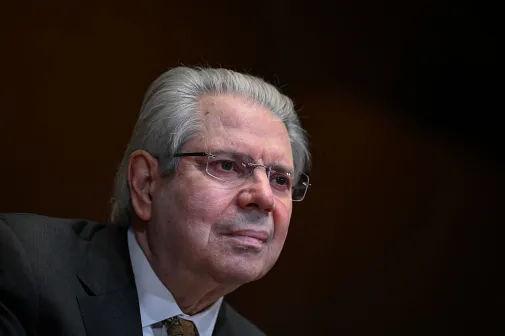OMB’s IT budget request gets pushback
Office of Management and Budget Director Shaun Donovan testified on several successes his office has seen with IT efficiency and billions in savings in recent years, but a House appropriations subcommittee told him it’d be hard to grant his requested increase in IT spending for fiscal year 2016.
OMB asked for an extra $15 million in the president’s fiscal 2016 budget request, which would bring its total spending through its Information Technology Oversight and Reform, or ITOR, fund to $35 million.
“That’s a pretty big increase,” said Ander Crenshaw, the Republican chairman of the House Appropriations Subcommittee on Financial Services and General Government from Florida. “It might be difficult for us to maybe provide you those funds.”
“We think it’s justified because the early results from what we’ve been doing on ITOR had real positive impacts and much bigger cost savings. We think this could have a big, big impact on savings,” Donovan said, adding that contracting costs have started to come down for the first time in a decade. “We are making progress in those places.”
OMB hopes to devote a chunk of the potential budget to adding 71 new workers. Most of those hires would go toward the U.S. Digital Service team. Currently the ITOR funds 41 positions, Donovan said.
The director spoke highly of his office’s ability to recruit new talent that could expedite technology development with big savings. He pointed to a specific example within the Department of Veterans Affairs to demonstrate what “talented engineers from Google and Facebook and a range of other leading-edge technology companies” are doing in the federal government.
“Three engineers from the Digital Service went to work on the Veteran Employment Services [Office] and their technology at the VA,” Donovan said. “Within three months — a cost of $175,00 — they’d done work that the VA had expected to spend $25 million on over many years. And that’s just one small example of the way this kind of investment in the staff [who] are at the leading edge of technology could help not only improve government service to our veteran and many others but also to reduce costs over the long term.”
The subcommittee was worried about OMB’s ability to more than double the team in just a year with qualified candidates, but Donovan said the demand from this nongovernment community engineers and technologists couldn’t be passed up.
“We could show you a list of names at this point, the demand has surprised even us, which is why we felt we needed to jump on it,” he said.
OMB also hopes to devote a portion of its budget to better IT acquisition and management for the greater federal government through category management.
“Part of the problem is that we act too much right now like many, many different agencies as opposed to one federal government: the number of licenses we have on particular software products, the way that we buy our hardware,” he said. Consolidating IT is a popular tactic in the private sector and the United Kingdom, which is saving between 10 and 15 percent on IT acquisition costs by eliminating redundancies.
Some members of the subcommittee struggled to understand where federal IT stands — if it’s gotten any better compared to the private sector, and — if it has — can it keep the progress up? Donovan said many of OMB’s efforts, like PortfolioStat, have generated about $2.5 billion in savings and costs are continuing to drop.
“The good news here is that we have made progress with the investments we’ve made, but I will also say there’s a significant distance to go,” he said. “What we’ve seen is both the quality of the way government contracts and implements technology improving … At the same time we’re seeing costs are going down, really for the first time we’re starting to bend the cost curve.”






